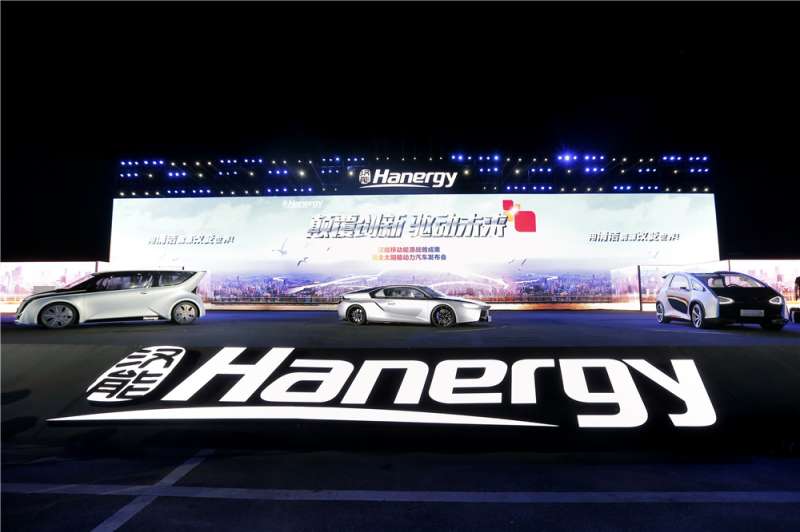July 10, 2016 weblog
Beijing event elevates interest in cars using solar power

Hanergy has launched solar-powered cars and they can be commercialized, in an announcement from Bejing earlier this month.
Dreaming about fully solar powered passenger cars in the future is easy and pleasant; more difficult has been the reality of charge anxiety and worrying over the presence of charging posts and having to make many mental notes about the distance per charge needed.
Taking the leap of faith and switching from gas to solar-powered mobility may be a stretch for many buyers, but Hanergy's news may generate interest.
Hanergy's announced cars are getting their energy from the sun. Zero charging is possible during medium as well as short distance trips. Power comes from affixed thin-film solar cells.
Here are the sun-and-range numbers from the company: with five to six hours of sunlight, the thin-film solar cells on the vehicle can deliver eight to ten kilowatt-hours of power a day, allowing it to travel about 80 km. The company said that this would meet the needs of city driving under normal circumstances.
Hanergy said they count themselves as the leading "thin-film solar power" company in the world (Bloomberg reported that Hanergy Holding is the Beijing-based parent of Hanergy Thin Film Power Group Ltd.)
They announced four cars: a sports car named Hanergy Solar R, Hanergy Solar O, Hanergy Solar L and Hanergy Solar A.
The cars use solar energy as the main source of driving force through control and managing systems. These systems include (1) a photoelectric conversion system (2) energy storage system and (3) intelligent control system.
Under routine-day use, the vehicles can charge themselves with clean solar energy while traveling. If the sun is weak, then lithium batteries kick in, getting power from charging posts, enabling them to travel a maximum of 350 km per charge.
Users select charging modes in accordance with varied weather conditions through apps on their mobile devices.
As for cleaning the solar cells, the vehicles are equipped with "ultrasonic cleaning technology" for maintaining the cells.
The four cars have gallium arsenide (GaAs) dual-junction solar cells; they are integrated with these GaAs thin-film solar cells, covering 3.5 to 7.5 square meters, respectively.
" Hanergy's thin-film solar achievements are already at the bleeding edge of solar efficiency, with the company's gallium arsenide (GaAs) dual-junction solar cells recently hitting a record conversion rate of 31.6%," said TreeHugger.
Autoblog's take? "We'll believe it when we can drive 'em," said Brandon Turkus, contributor. Turkus looked at the numbers— five to six hours of sunlight – good enough for a shade under 50 miles of driving range.
"That is an extremely lofty goal, one that Hanergy says is due to the 38 to 81 square feet of solar panels covering each car's body. The solar film apparently has a conversion rate of 31.6 percent."
Turkus added, "That means that the panels store 31.6 percent of the sunlight that hits them as electricity – it's a record-breaking figure, according to Hanergy..."
Tycho De Feijter, who writes about the Chinese car market and founded CarNewsChina.com, said in Forbes that, "The four Hanergy vehicles are basically standard electric cars with solar power functioning as an extra source to extend range." He provided some details about the quartet and what they might mean to the future of driving.
He said that "the current solar energy conversion rate of its high-end cells is 31.6%, but this is expected to go up to 38% in 2020 and 42% in 2025. That would make "a fully-solar powered car possible, according to the company."
He discussed interesting features: solar panels can be used to power different motors. The Hanergy Solar R has solar panels on the hood and the roof. "The former are being used to power an electric motor on the front axle, whereas the latter powers a motor on the rear axle."
What is more, he wrote, the surface of the solar panels can be extended when the vehicle is stopped to allow for faster charging— temporarily using windows as extra panels or by folding out the roof-based solar panels, space-station style.
More information: www.hanergy.com/en/content/details_37_3602.html
© 2016 Tech Xplore
















